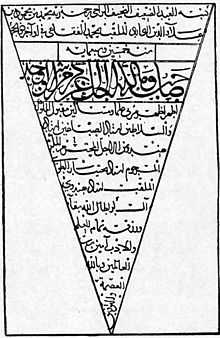Qabus nama

It was written by Keikavus,[2] the Ziyarid ruler of Persia, also known as the Prince of Gurgan, and was dedicated to his son Gilan-Shah.
The belles-lettres was written in 44 chapters and outlines princely education, manners, and conduct in ethical didactic prose.
Extant original copies
- The oldest copy, dated 1349, belongs to the library of Malik National Museum of Iran in Tehran.
- One of the earliest remaining copies of this work is one dating from 1450, translated into Turkish by Marjumak Ahmad ibn Ilias on the orders of the Ottoman Sultan Murad II. It is kept in the Fatih Library of Istanbul.
- The British Museum keeps a copy of an early Turkish translation, dated 1456.
- Another copy, dated 1474, exists in the Bibliothèque nationale de France in Paris.
- An excellent copy is kept at the Leiden University library.
The Turkish version was then translated into German by Heinrich Friedrich von Diez as Buch des Kabus in 1811, and a source of inspiration for Goethe's West-östlicher Diwan as he was in contact with von Diez.
The text was translated directly from Persian into English by Reuben Levy with the title: A Mirror for Princes in 1951. French, Japanese, Russian, and Arabic language translations also followed.
Cultural references
This work is mentioned several times in Louis L'Amour's The Walking Drum as well as in Tariq Ali's "The Stone Woman".
See also
- Persian Literature
- Mirrors for princes